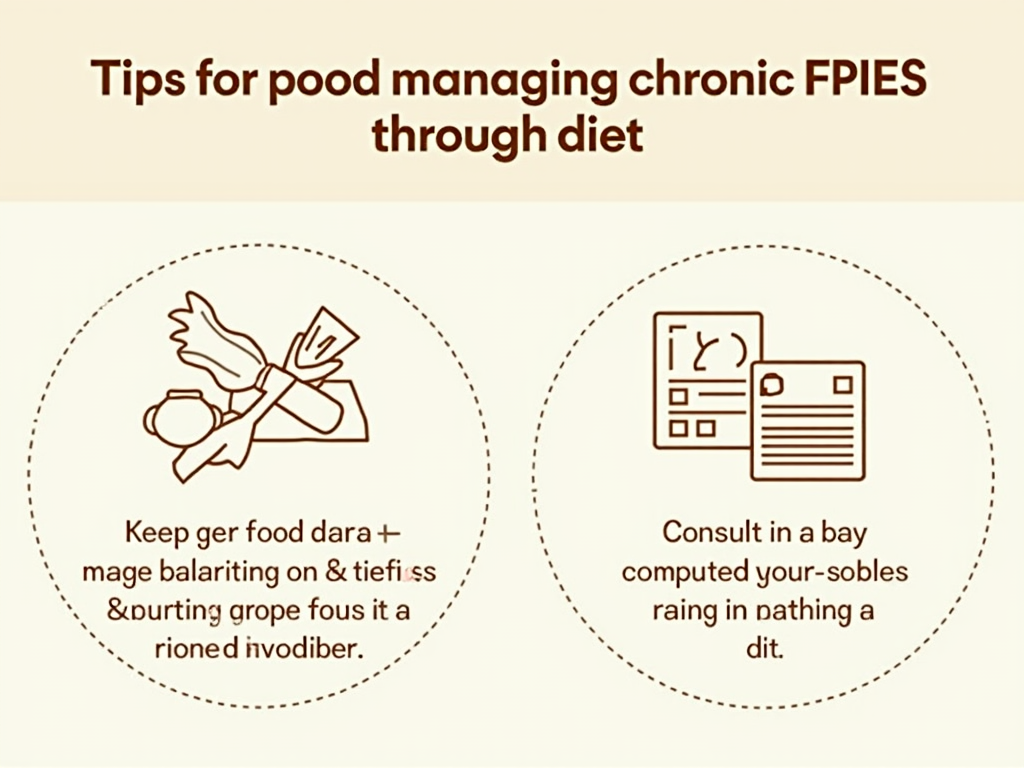Overview
Chronic FPIES is a rare food allergy that causes severe reactions in children. Understanding its symptoms and managing diet is crucial for preventing episodes and ensuring a child's well-being.
What is Chronic FPIES?
Chronic Food Protein-Induced Enterocolitis Syndrome (FPIES) is a type of food allergy that affects the gastrointestinal system. Unlike typical food allergies, FPIES reactions are delayed and can be severe, leading to vomiting, diarrhea, and lethargy. It primarily affects infants and young children, and managing it requires careful attention to diet.
Symptoms of Chronic FPIES
Recognizing the symptoms of chronic FPIES is the first step in managing the condition. Common symptoms include:
- Vomiting: Often severe and repetitive, occurring 1-4 hours after eating the trigger food.
- Diarrhea: Can be chronic and may contain blood or mucus.
- Lethargy: Children may appear tired or weak after a reaction.
- Pallor: A noticeable paleness in the skin.
- Dehydration: Due to vomiting and diarrhea, which can be dangerous if not managed.
These symptoms can be frightening for parents, but with proper management, they can be controlled.

Dietary Management: The Key to Controlling Chronic FPIES
Managing chronic FPIES revolves around identifying and avoiding trigger foods. Common triggers include rice, oats, dairy, and soy, but any food can be a trigger. Here’s how to approach dietary management:
- Identify Trigger Foods: Keep a detailed food diary to track what your child eats and any reactions that follow.
- Consult a Specialist: Work with a dietitian or allergist to create a safe eating plan.
- Introduce New Foods Carefully: When introducing new foods, do so one at a time and monitor for reactions.
- Be Prepared for Reactions: Have a plan in place for managing reactions, including when to seek medical help.

Personal Insight: A Parent’s Journey
When my son was diagnosed with chronic FPIES, I felt overwhelmed. The thought of managing his diet so carefully was daunting. But with the help of a dietitian, we identified his trigger foods and created a safe meal plan. Today, he’s thriving, and I’ve learned that while chronic FPIES is challenging, it’s manageable with the right support.
Tips for Managing Chronic FPIES
- Keep a Food Diary: Track everything your child eats and any symptoms that follow.
- Work with Professionals: Dietitians and allergists are invaluable in creating a safe diet plan.
- Educate Caregivers: Ensure that anyone who cares for your child understands their dietary needs.
- Stay Informed: Join support groups or online communities for parents of children with FPIES.

Summary
Managing chronic FPIES requires understanding its symptoms and carefully managing diet. With the right approach, children can lead healthy, happy lives.
Discuss Here